-
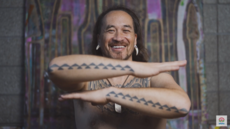
The Pepa Trail – Printing in Rarotonga
Auckland Council staff Liam Kokaʻua (Rarotonga), Angelique Tuaputa (Mangaia) and colleagues discuss the significance of 5 posters (pepa) printed in Rarotonga in the 1840s, currently cared for in the Auckland Libraries Heritage Collection. They explore the story behind each pepa and what we can learn today about the history of people and place at the time of the arrival of the printing press in Rarotonga. {{31323}} This video is part of: Collections Talk - a documentary film series that explores taonga held in our Auckland Libraries Heritage Collections and Auckland Council Archives. Journey with narrators who illustrate how documentary heritage collections help us understand our past, our present and show us potential paths into our future. Youtube link to the full Collections Talk series here - https://www.youtube.com/playlist?list=PLkMKU0JvwTBYA26wEa3Y62aEWiG7AOFOM {{31325}} For more on the Pepa on Kura Heritage Collections Online - click the link below: https://kura.aucklandlibraries.govt.nz/digital/collection/rarebooks/search/searchterm/Pepa - To search Polynesian Pamphlets digitised on Kura click the link below: https://kura.aucklandlibraries.govt.nz/digital/collection/rarebooks/search/searchterm/Polynesian%20Pamphlets
-
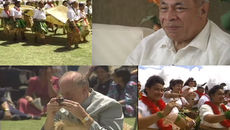
FAKAPANGAI: In the Circle of the Sovereign
In 1993, His Majesty King Taufa'ahau Tupou IV of the Kingdom of Tonga ventured to Hawaii to bestow a traditional title; Mafifakapotu. This was the first and only time His Majesty has allowed this ceremony to be held outside the confines of his island kingdom in the South Pacific. Join with the celebrants in witnessing this amazing investiture filled with ancient tradition and historic significance.
-
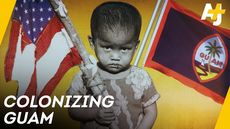
How the US Territory of Guam became an American Colony
The U.S. territory of Guam has a unique history as one of the longest-running colonies in history. How did it get this way? Guam has been colonized by the Spanish, occupied by the Japanese and militarized by the Americans. But the history of its indigenous Chamorro people goes back even further. AJ+ went to Guam to speak with indigenous Chamorro people about the island's complicated past. Watch the rest of the documentary series below: - Part 2 More Americans from Guam serve in the U.S. military, per capita, than from any U.S. state. But they can’t even vote for president. AJ+ Producer Jun Stinson goes to Guam to speak with service members and veterans about what it's like to serve a country that doesn't allow you to vote. Then she meets up with indigenous Chamorro activists who are fed up and consider Guam to be a U.S. colony. {{15258}} . Part 3 There’s a growing movement of young people on Guam who envision a sustainable future for the island. They want to end the island's dependency on imported processed foods, which has been ongoing since World War II and has led to high rates of heart disease and diabetes. {{15259}} . Part 4 What does it mean to be a citizen of a United States territory and also be indigenous? The Chamorro people on Guam tell us about their multifaceted — and often complicated — identity. {{15260}}
-
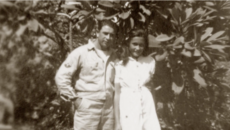
BORN OF CONFLICT - Children of the Pacific War
Between 1942 and 1945, more than 2 million Americans went to war in the South Pacific. When World War II ended they went home leaving 100,000 dead, tons of military equipment and over 2,000 children. This doco looks at the stories of three children left behind by American servicemen posted to the Pacific during WWII. Now in their early 70s, these children were identified through an Otago University research programme.
-
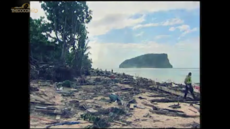
Samoa Tsunami anniversary tribute
On Sept 29th 2009 at 6.48am an 8.3 richter earthquake caused a giant tsunami to hit the Southern coast of Upolu Samoa killing over 150 people, wounding hundreds more, leaving over 3000 people bereft of homes and livelihoods. The Galu afi. Alofa atu to the hundreds of families who lost loved ones in this tragedy, on the fated day of Sept 29th.
-
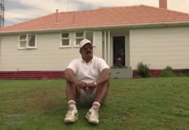
Otara - Defying the Odds
Postwar Māori, Pākehā and Pacific Island migrants made Ōtara the fastest growing area in New Zealand. But as local industries closed, it became a poster suburb for poverty and crime. This TV3 Inside New Zealand documentary sees eight successes from Ōtara telling their stories — from actor Rawiri Paretene and MP Tau Henare, to teachers and entrepreneurs. They reflect on mean streets, education, community and the Ōtara spirit.
-
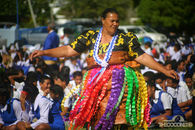
The Coronation of King Tupou VI
See all the action in the week leading up to the King of Tonga's Coronation, including the Wesleyan Church offerings to the King and Queen, the block party, the Taumafa Kava, the Coronation day itself, and the Fire lighting ceremony. Tongatapu 2015.
-
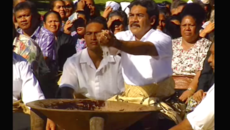
Kava Kuo Heka - Royal Kava Ceremony of Tonga
In 1998, in the Kingdom of Tonga, two Royal Kava ceremonies took place which were presided over by His Majesty King Taufa'ahau Tupou IV. Never before were cameras permitted at these ancient, traditional ceremonies ~ Gary B Smith directed this program in collaboration with Dr. Eric Shumway and Dr. Vernice Wineera from the Pacific Institute of BYU-Hawaii. Enjoy witnessing a remarkable Polynesian event filled with symbolism and majesty from a bygone era.
-

History behind why some U.S territories can't vote
In Guam and American Samoa, you can serve in the U.S. military but can't vote. Here's why... A set of Supreme Court decisions made over 100 years ago has left U.S. territories without meaningful representation. Think that's fair?
-
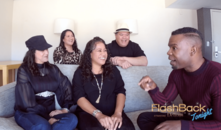
80's ICONS 'THE JETS'
Flashback Tonight goes on location to catch up with the hit making siblings from the 80's THE JETS. They let it all hang out regarding the family split, not being able to read music & songs they hate & miss singing. Also if you were around in the 90s you may remember RnB group 'All 4 One' - the Flashback Tonight interviewer is part of that group!
-
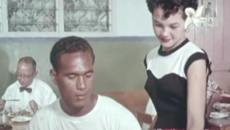
Two Men of Fiji - 1960
Check out the first short film filmed in Fiji - back in the 1960s! FIJI'S FIRST SHORT FILM made in 1960s.Two Fijian brothers trying their luck in Suva City.FIJI ISLANDS Principal credits Production companyShell Film Unit Australia ProducerBernard Gandy WriterBrett Porter DirectorBrett Porter Cast Jale Ataogo Adriu Kaubale Seru Vuki Ravuama Vunivalu Waisake
-
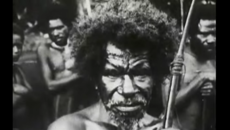
Cannibals of the South Seas (1920)
Check out this amazing archive footage of the Tomman Island - showing life on the small island in Vanuatu! Customs of the inhabitants of Tomman Island in the 1920s, probably extracted from Martin Johnson's film Among The Cannibal Isles of the South Pacific (1918) - including the practice of head binding thought to make the brain 'go further'
-
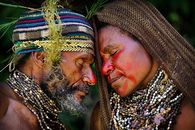
Love Rituals in Papua New Guinea
A look into one of the ancient traditional ceremonies from Papua New Guinea that are still practiced today! An important institution for these people is the courting ceremonies. This ritual lasts weeks, and women invite men from other tribes and look for their partner. In Papua New Guinea tribes, incest is not permitted, so they have to look for other villages' men. There's one old man who helps them decide who will be their partner.
-
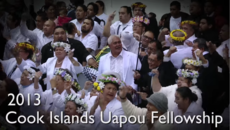
UAPOU FELLOWSHIP - TOKOROA
This doco which was filmed in 2013 looks at the Uapou Fellowship held in Tokoroa and the way the Cook Island culture is preserved through 'Uapou' or 'fellowship' - the coming together of people. Leaders and youth are interviewed about this tradition that Cook Islanders celebrate in New Zealand.
-
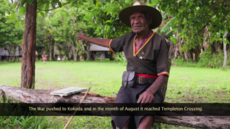
Kokoda Story: Papua New Guinean histories of WWII
After being thwarted in their attempts to reach Port Moresby by sea, the Japanese attempted a march across the Owen Stanley Ranges along the Kokoda Track to take the town by land. Their first encounter with Australian troops took place on 22 July 1942. For the next seven months, an intense, military campaign took place along the Kokoda Track resulting in the loss of many lives and severely impacted on the lives of villagers. Kokoda Stories – Papua New Guinean Stories of World War Two documents the war time experiences of PNG service men, and villagers living along and near the Kokoda Track. The video was made possible through the Oral History Project supported by the Kokoda Initiative, a joint initiative of the Australian and Papua New Guinea Governments in partnership with the PNG National Museum and Art Gallery.
-
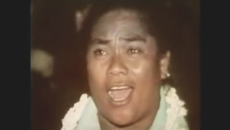
Western Samoa Teachers Group performance at Auckland Airport 1976
Check out the impromptu performance by the (Western) Samoa Teacher's Group as they arrived in Auckland for the South Pacific Festival of Arts in 1976 to be held in Rotorua. Many families, friends and loved ones of the group had awaited their arrival and thus the impromptu performance came about on the carpark of the Airport.
-
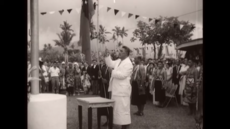
The first Independence Day celebrated in Samoa
Take a look back at the moment that Samoa regained its independence - the historic day of the first sisiga fu’a of Samoa in 1962. The current Prime Minister of Samoa, Fiame Naomi Mata’afa’s father Mataʻafa Faumuina Mulinuʻu II, Samoa’s first Prime Minister watches on as Heads of State - Malietoa Tanumafili II and Tupua Tamasese Mea'ole raise the flag in this monumental moment in Samoa’s history. - Here is a photo of a young Fiame arriving at Samoa Independence Day celebrations with her father. {{23809}}
-
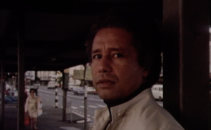
Auckland Fa'a Samoa: A Story of Samoans in the City 1982
{{11443}} Life in Auckland for Pacific Islanders in the 1980s was hugely different from today, take a look back at the era of a brown inner city, late night shopping KRoad, and tail end of the infamous dawn raids.
-
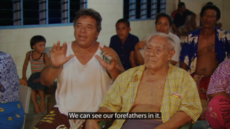
The village of Safune remembers "Moana" the documentary
Check out what some of the descendants of the actors in the world's first documentary think of "Moana" Robert Flaherty is credited with being the father of the modern documentary after making "Nanook of the North" and classics such as "Man of Aran" and "Moana", but he is also criticized for engaging in distortion and stereotyping. In the documentary "A Boatload of Wild Irishmen" - they go back to the village of Safune in Savai'i, Samoa and see just how the film continues to be received by the descendants of the actors there.
-
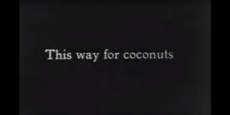
Amazing Footage of Life in Hawaii in the 1920's
Awesome silent video of Life in Hawaii in the 1920s! A fisherman with net casting through surf, catches mullet, fishing at night with spears and torches, Kalapana beach, black sand, boys play in surf, climb coconut trees, couple in modern bathing suits breaking coconuts, drinking coconut milk.
-
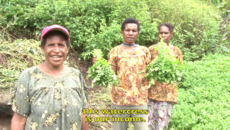
Women in Agriculture
Everyday in Papua New Guinea's rugged eastern Highlands province, the nation's biggest business success story is taking place. It is the story of women farmers. In PNG, where up to 97% of land is owned by the people, land is life. And women are the backbone of the land. But they earn little government respect for the vital role they play, and support from men is lacking. The women leaders of the group 'Eastern Highlands Women in Agriculture' works with over 1,500 of these unsung heroes on whose backs PNG's real economy leans. In this documentary, meet some of the women doing remarkable things through their creativity, compassion and determination. They hold the future of a better PNG in their hands.
-
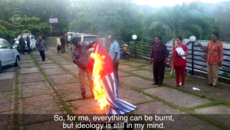
EVERYTHING CAN BE BURNT - West Papua in the Jokowi Era
The face of West Papuan society is changing but RNZ International found that the core ideology of the indigenous people of Indonesia's Papua region is not easily destroyed. Since the making of this documentary, a petition signed by 1.8 million West Papuans seeking an independent vote and self determination was rejected by the United Nations. The United Liberation Movement for West Papua now hopes New Zealand's new Prime Minister Jacinda Ardern will take up the issue of their Self Determination with many of her Pacific leaders in the Labour government very supportive of West Papua's human rights.
-
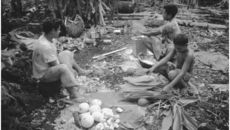
Life in Samoa, 1950's
Take a look back at life in Samoa in the 1950's See some the history of Samoa from the arrival of famous Scottish novelist and poet Robert Louis Stevenson who lived and loved in Samoa to building traditional Samoan fale's.
-
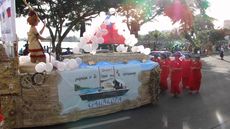
50th Samoan Independence - Part 4
Take a look at the history of Samoa and it's rocky road to Independence in this stunning documentary from Tagata Pasifika.
-
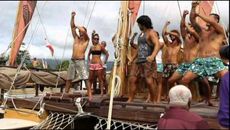
50th Samoan Independence - Part 3
Take a look at the history of Samoa and it's rocky road to Independence in this stunning documentary from Tagata Pasifika.
-
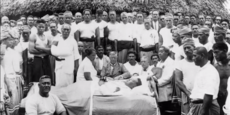
50th Samoan Independence - Part 2
Take a look at the history of Samoa and it's rocky road to Independence in this stunning documentary by Tagata Pasifika
-
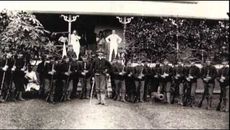
50th Samoan Independence - Part 1
Take a look at the history of Samoa and it's rocky road to Independence in this stunning documentary. In Part 1 of the series by Tagata Pasifika, they look at the history of the Samoa and it's people - from the German and US rule and division, to banishment of important leaders of the Mau Movement.
-
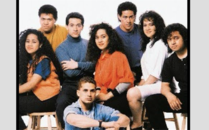
UNSUNG - THE JETS
Rising to success in the mid-80s, the hit teenage group The Jets put a surprising twist on the Minneapolis sound and drew inspiration from Prince. Comprised of five brothers and three sisters of Tongan descent, the group took the R&B and Pop charts by storm with hits like “Crush on You,” “You Got it All,” and “Make it Real.” With so much of their success based on their youth appeal, the band fizzled from the spotlight by their early 20s. The group’s lead singer left the group after she was diagnosed with breast cancer at 21, and the other siblings gradually drifted apart. Twenty-five years later, the family members are still making music, but have split into two bands due to personal differences. Despite the split, the members are still entertaining audiences with music that initially captured their fans hearts. Watch their journey in the Unsung music documentary above. About Unsung UNSUNG celebrates the lives of trailblazing musicians whose full stories and journey have yet to be explored. This season promises memorable stories of influential artists including singer/songwriter Shirley Murdock, dance music legend Crystal Waters, R&B crooner Glenn Jones, vocalist Kenny Lattimore and contemporary gospel musician Tasha Cobbs Leonard.
-
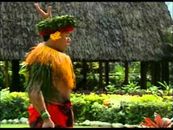
#IslandArchive - Polynesian Cultural Center in Hawaii
Check out this awesome demonstration from this Samoan master at the Polynesian Cultural Center! Using that classic faleaitu (Samoa comedy) style of delivery, Chief Sielu shows tourists the know how and can do of creating fire- Samoa Style!
-
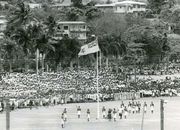
FIJI INDEPENDENCE
Fiji became an independent sovereign state on 10th October 1970 when its colonial status was abrogated. Ratu Sir Kamisese Mara, the first Prime Minister of independent Fiji, received from Prince Charles the documents evidencing Fiji’s independence. That independence was and remains a great source of pride and joy to all Fiji citizens. On that day the dark clouds of colonialism were swept away. This 5 part documentary looks at the road to Fiji's independence. . Part 2 {{5666}} Part 3 {{5667}} Part 4 {{5668}} Part 5 {{5669}}
-
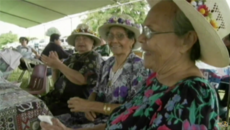
Island Archives - Olohega
Olohega. A small, idyllic Pacific island north of Samoa and just south of Tokelau. Bought for a bottle of gin and 15 shillings an acre. Annexed to the United States. Its former inhabitants were evicted almost sixty years ago from their island and long to return. - Check out this article presenting a timeline of the United States claiming sovereignty over the Tokelau island of Olohega, most recently through a proclaimed “friendship treaty” organised by New Zealand. Curator Pacific Fuli Pereira has chosen this paper as a must read for Tokelau Language Week 2021
-
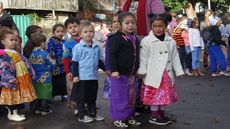
Island Archives: A'oga Fa'a Samoa
The A’oga Fa'a Samoa is an institution in Aotearoa and the Pacific, and has been instrumental in our bi lingual education in NZ. The award winning center has brought many generations of Samoan children through early childhood and had a huge impact on Samoan communities in Auckland. The A'oga Fa'a Samoa was established in 1984 and is based at Richmond Road Primary School in Central Auckland. It was established to help nuture the Samoan language and culture in young NZ-born Samoans by the community, for the community. Check out this vid from their 20th Anniversary DVD!
-
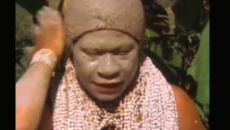
Women of Papua New Guinea: Yesterday, Today and Tomorrow
This film reveals the rich tribal heritage of women in New Guinea by examining ancient customs and beliefs. It also reveals a modern woman challenging tradition and the pulls of the past.
-
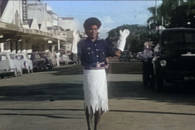
Fiji Flashback: Unearthed footage shows Suva in the 1960s
By 1960 Suva was the biggest city in the South Pacific, and the ABC was there to document life in the then British colony. The ABC’s Weekend Magazine filmed on the streets of Suva, showcasing life in Fiji’s capital. To see more of the ABC Pacific collection head to the ABC Pacific Collection
-
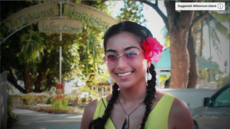
JULY 12TH - KIRIBATI INDEPENDENCE DAY
Lulu DeBoer spends her first Kiribati independence day in Kiribati and reflects on what independence means in the context of climate change. Also dancing dancing dancing, because everyone loves Kiribati dance.
-
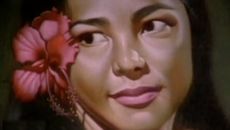
Cook Islands Princess
These are only some of the artwork & drawings by Mama Tupou at the tender age of 74 yrs. Mama Tupou has had several Art exhibits including Tivaevae bedspreads. Her late Mother, Mama Toa was an expert Taunga in Tivaevae Art. Mama Tupou is the iconic N.Z Dusky Maiden, immortalised on black velvet by the late, Charlie Mcphee. Hailed as a goddess she is without doubt one of the most beautiful Polynesian women ever painted in history.
-
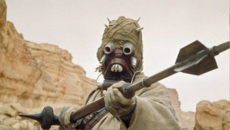
Star Wars and the Fiji Connection: Redux
The movie Star Wars: The Force Awakens opened in New Zealand on 17 December. But did you know the franchise has a connection to the warriors of 19th century Fiji? By Sean Mallon Fijian weapons had a small role in the imaginings for one of the most successful science fiction films of all time….George Lucas’s Star Wars (1977). I posted about this previously several years ago, but with the opening of The Force Awakens, I thought the blogpost deserved a re-release. Gaffi stick TCG by Hustak from Wookieepedia.com In the 1970’s, a weapon known as a totokia was the inspiration for Star Wars prop designers who developed the gaderffii or gaffi stick, a weapon used by the Tusken Raiders on Tatooine, one of the planets in George Lucas’s invented galaxy. The handle of the gaffi stick incorporated a full length totokia and other versions incorporated other forms of long handled Fijian clubs. Portrait of a Fijian Chief, 1906, by Leslie Hinge. Te Papa (B.002800) In Fiji during the 1800s, totokia were weapons often associated with chiefs and warriors of reputation. Fiji material culture scholar Fergus Clunie describes it as a beaked battlehammer, “…the totokia was intended to “peck” holes in skulls.” The weight of the head of the club was concentrated in the point of the beak of the weapon or kedi-toki (toki” to peck; i toki: a bird’s beak). The totokia “…delivered a deadly blow in an abrupt but vicious stab, not requiring the wide swinging arc demanded by the others.” It was a club that could be used in open warfare or to finish-off or execute warriors on the battlefield. Totokia (club), Fiji, maker unknown. Oldman Collection. Gift of the New Zealand Government, 1992. Te Papa (OL000130.S/1) Te Papa has several examples of Fijian totokia from the 1800s in its collections.They are usually carved from a beautiful dark timber and are often decorated with detailed carvings. Some examples are inset with human teeth or small pieces of whale ivory. Totokia (club), 1800s, Fiji, maker unknown. Oldman Collection. Gift of the New Zealand Government, 1992. CC BY-NC-ND licence. Te Papa (OL000130.S/5) Totokia (club), 1800s, Fiji, maker unknown. Oldman Collection. Gift of the New Zealand Government, 1992. CC BY-NC-ND licence. Te Papa (OL000130.S/5) European collectors often referred to totokia as pineapple clubs because of their distinctive shape. Other commentators have said that the business end of the club more closely resembles the pandanus fruit. Pandanus_utilis_fruit. Photograph B.Navez A few bloggers have picked up on the connection between the gaffi-stick and the totokia over the last few years, and it has been well known in the Star Wars geekscape for quite a while. There are even websites with instructions on how to build your own gaffi-stick and the costumes of the Tusken Raiders. One dedicated fan has developed a “Fijian Totokia war clubs” kit for people to purchase. The totokia in Te Papa offer an intriguing glimpse into indigenous warfare in Fiji but also the skill and creativity of local carvers. What would these carvers of the 1800s make of the Star Wars connection today? Pop! Star Wars “Tusken Raider vinyl bobble head” with totokia, Fiji. The gaffi stick links Check out Wookieepedia: Check out gaderffii Make your own: Sources referenced: Clunie, Fergus, Fijian Weapons and Warfare. Bulletin of The Fiji Museum, No. 2.Suva, 1977. Clunie, Fergus, Yalo i Viti. A Fiji Museum Catalogue. Fiji Museum. Suva, 1986. Source: Te Papa
-
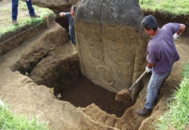
Easter Island secrets uncovered
A new series of photographs from a 2012 excavation on Easter Island (Rapanui) have emerged showing previously hidden bodies and intricate patterns adorning the Moai statues. The images have been shared far and wide on social media, being viewed more than 1 million times on Imgur. They show detailed markings such as crescents, which academics say represent the canoes of the early Polynesians who had settled on the island, the UK’s Mirror reports. There are 887 huge statues carved between AD 100 and 1800, most of which are up to 10 metres tall. The Easter Island Statue Project have been excavating the statues for years, and provided the first photos of their torsos in 2012. “The reason people think they are (only) heads is there are about 150 statues buried up to the shoulders on the slope of a volcano, and these are the most famous, most beautiful and most photographed of all the Easter Island statues,” Jo Anne Van Tilburg from the Easter Island Statue Project said. The first pictures of the statues showing their full size were taken in 1919 by the Mana Expedition - this was later confirmed by the explorer Thor Heyerdahl and his Norwegian Archeological Expedition in 1955. This confirms previous claims that the island was first settled by Polynesian people as part of the great wave of Pacific colonisation. Still, not much is known about the true origins of the statues and how they were made - but this new find puts us one step closer to finding the truth about it's inhabitants and the beautiful stone monoliths they left behind.
-
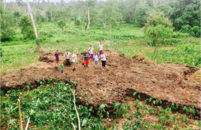
Samoa's ancient 'Star Mounds'
The veil has been lifted on a part of Samoa's archaeological history dating back 1500 years. It's known as the Palauli cultural heritage trail, and it's home to the very distinctive 'star mound'. Renee Iosefa visited the trail.
-
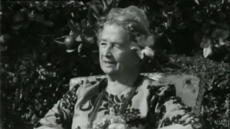
Aggie Greys
Take a look back at the iconic Aggie Greys hotel in Apia, as it launches as a Sheraton today! Aggie Grey, the original 'Bloody Mary' from the South Pacific movie of years ago, started a Pacific legacy in Samoa; and now her grandson is expanding that legacy into Tahiti.
